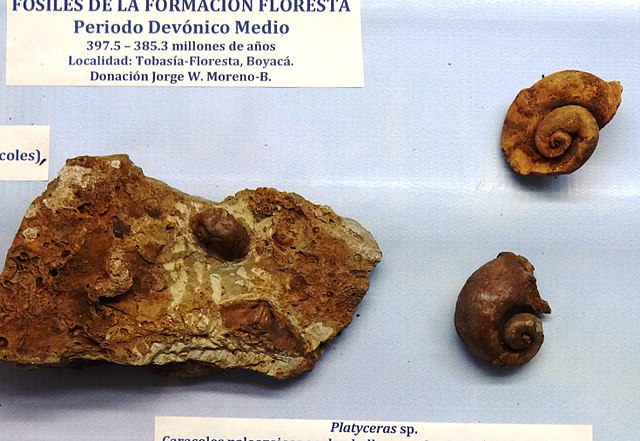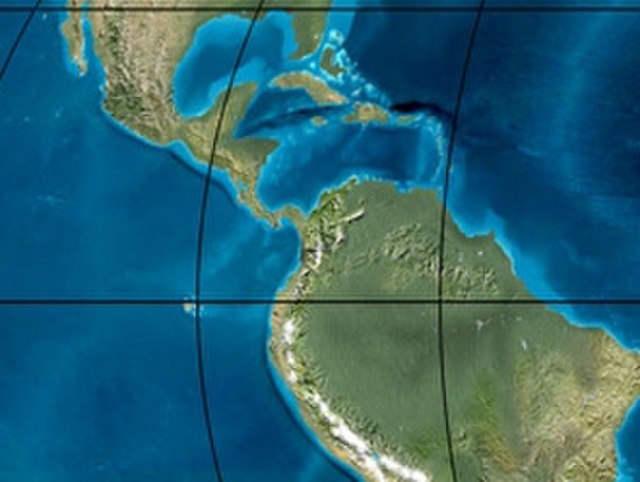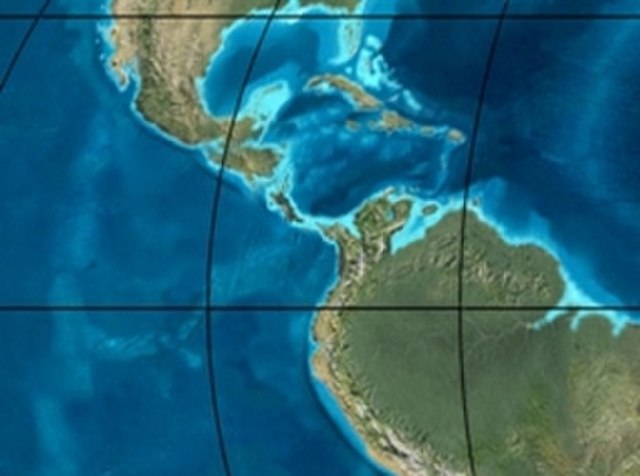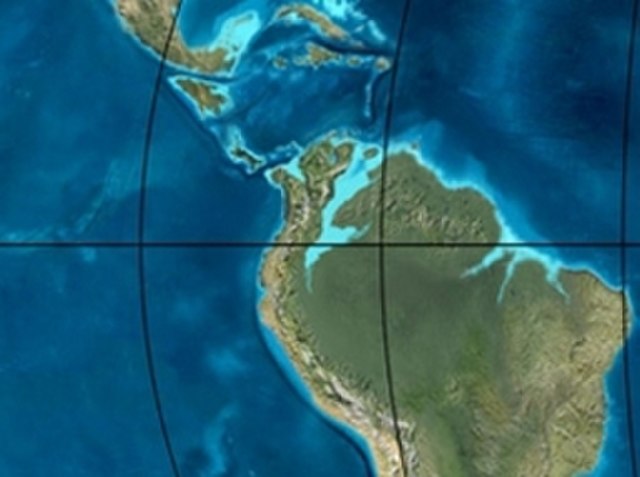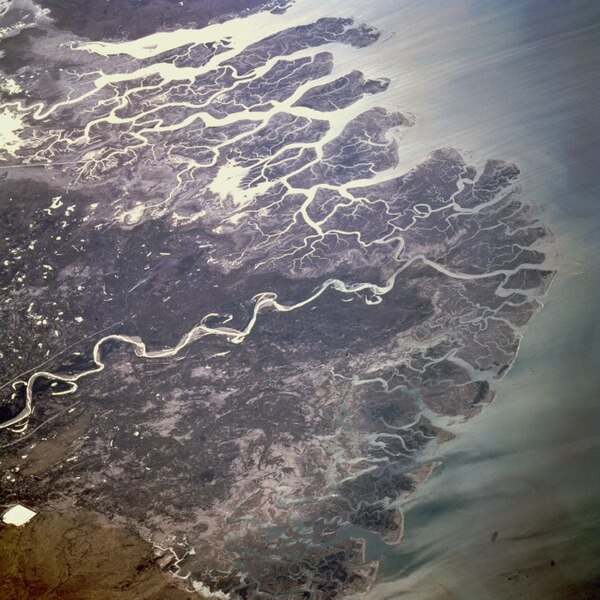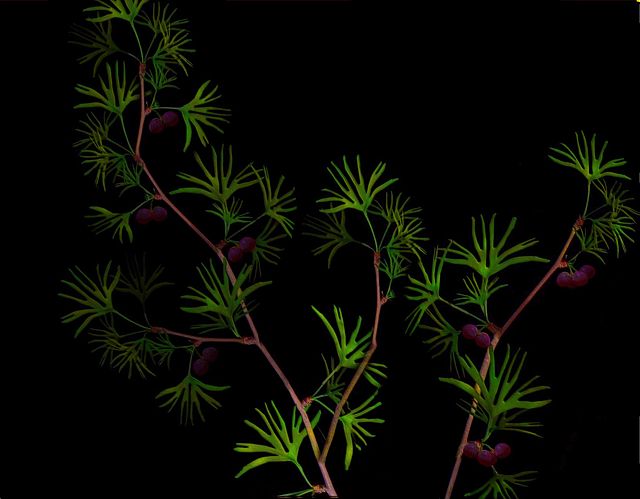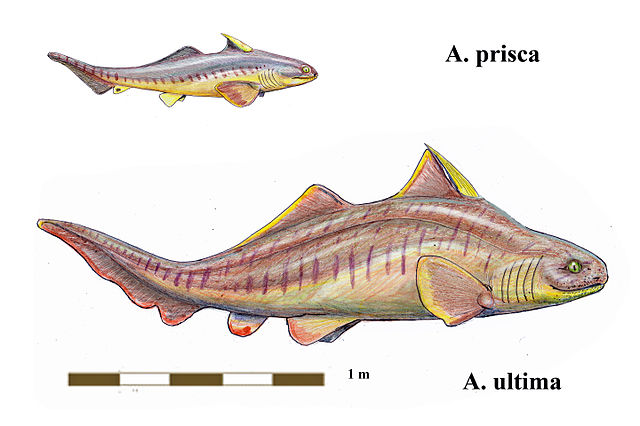The Floresta Formation is a geological formation of the Altiplano Cundiboyacense in the Eastern Ranges of the Colombian Andes. The sequence of siltstones, shales, coquinas and sandstone beds dates to the Devonian period; Late Emsian, Eifelian and Early Givetian epochs, and has a maximum thickness of 600 metres (2,000 ft). The unit is highly fossiliferous; brachiopods, bryozoans, gastropods, trilobites, corals and bivalves have been found in the Floresta Formation. Some fragments of Placoderm fish fossils were found in the Floresta Formation, while the overlying Cuche Formation is much richer in fish biodiversity.
Platyceras nodosum from the Floresta Formation
Image: Blakey Pleist COL
Image: Blakey 020Ma COL
Image: Blakey 035Ma COL
The Cuche Formation is a geological formation of the Floresta Massif, Altiplano Cundiboyacense in the Eastern Ranges of the Colombian Andes. The sequence of siltstones, shales, and sandstone beds dates to the Late Devonian and Early Carboniferous periods, and has a maximum thickness of 900 metres (3,000 ft).
Contrasting with the original coastal depositional environment, the Cuche Formation is found at altitudes of more than 2,500 metres (8,200 ft) in the Eastern Colombian Andes around Floresta, Boyacá
The depositional environment of the Cuche Formation has been analysed to be a low-energy tidal-dominated deltaic setting, with frequent marine incursions into continental and lagoonal areas marked by the presence of both the flora and the many fish species found in the formation
Fossil flora from the Cuche Formation were identified as "Ginkgo-like" species, as this Baiera reconstruction. Proper Ginkgo do not appear in the geological record until the Middle Permian
Antarctilamna (Gondwanan)

